Reviews
The Origins of Independent Watchmaking
Reviews
The Origins of Independent Watchmaking
The rarer and increasingly desirable category is distinguished by a one-man show, in which a solitary artisan conceives and crafts a single watch from start to finish, almost entirely by hand. The innovations of such independents are often the well from which have sprung solutions to perennial problems that have gnawed at the minds of watchmakers for centuries. The next category is characterized by an unbridled technical, aesthetic and conceptual creativity, which, when realized in its most extreme forms, alters the language of watchmaking.
What both these categories of independent watchmakers have in common is complete autonomy — a vision unencumbered by the bottom lines and the marketing directives of a large corporate company. Instead, these independents work from an inner necessity and are almost strictly driven by intellectual and artistic pursuits, which oftentimes leave an impact on watchmaking that is directly inverse to their production numbers.
Independent watchmaking would not be what it is today if not for a handful of forerunners who have fought a brave battle to preserve the craft, expand the boundaries of horology and establish the innovations that we so often take for granted in watchmaking.
On that note, it is only apt to begin with a man whose contributions to horology have been so fundamental and multifaceted yet, for the most part, underappreciated during his lifetime.
The English Forerunner
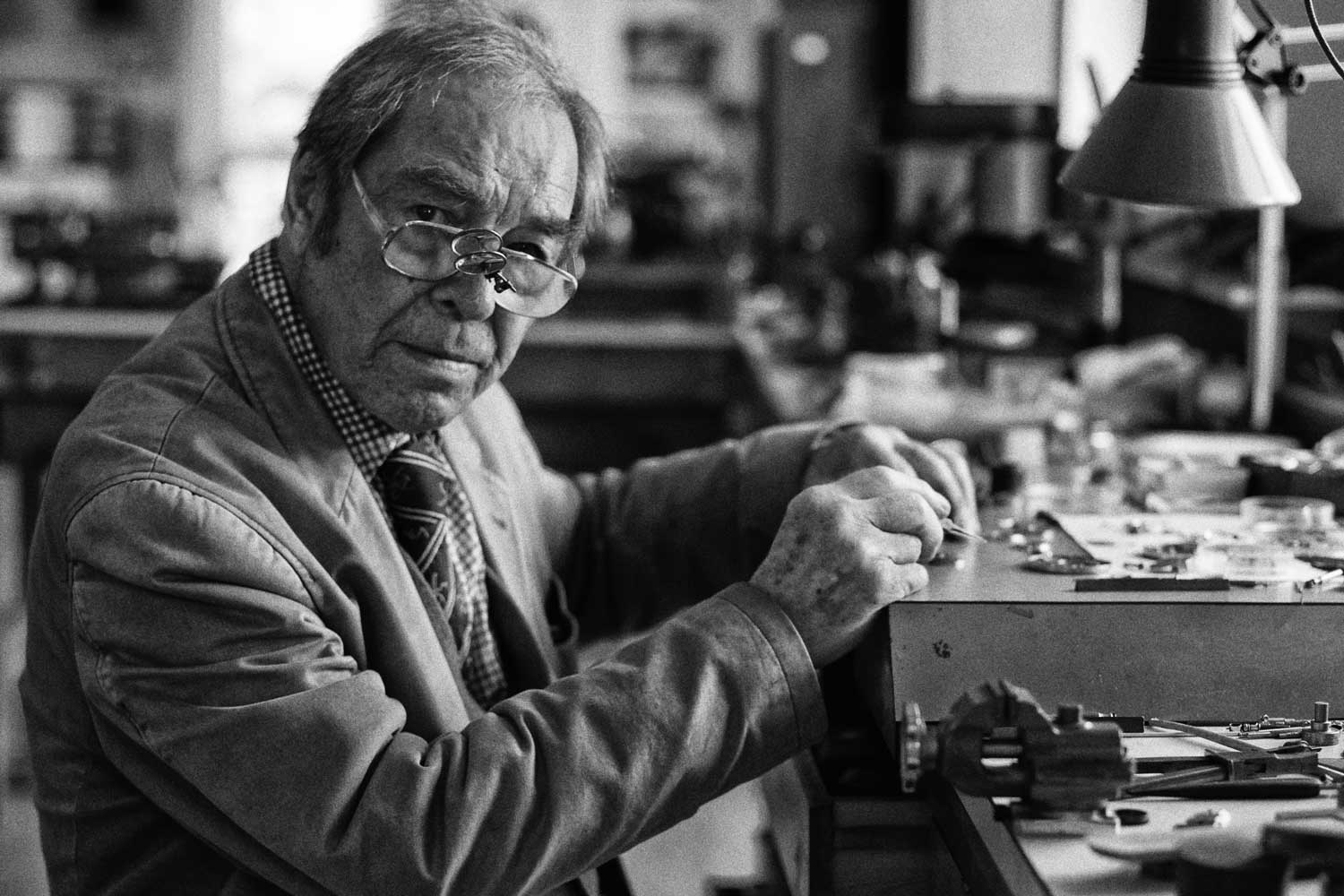
Dr. George Daniels
By the 20th century, English watchmaking was a fading trade, dominated by restorers and repairers. It was one of the first industries to suffer from the after-effects of the Industrial Revolution as the complexity and artisanal nature of English watchmaking and its heavy reliance on skilled artisans meant that it was fiercely resistant to modern modes of production. As a result, it was unable to compete in terms of lower costs and higher volume. While its growth had preceded and contributed to the Industrial Revolution, the start of its decline, ironically, resulted from the proliferation of mass production techniques that were a hallmark of industrialization.
In the 1960s, enraged by the suggestion that electronics would be the future of watchmaking, Daniels decided to dedicate his life to making his own watches and improving the chronometric performance of the escapement.
He was the first watchmaker who mastered 32 of the 34 crafts considered necessary to build a watch and was able to create every component of his watches from scratch, including movement, dial and case, with the exception of springs and glass. In the midst of the Quartz Crisis, he wrote his seminal book, Watchmaking, that would become a guiding light for future generations of watchmakers who chose to follow in his path. During his lifetime, he made 27 unique pocket and wristwatches from the ground up, using what is now known as “The Daniels Method.”
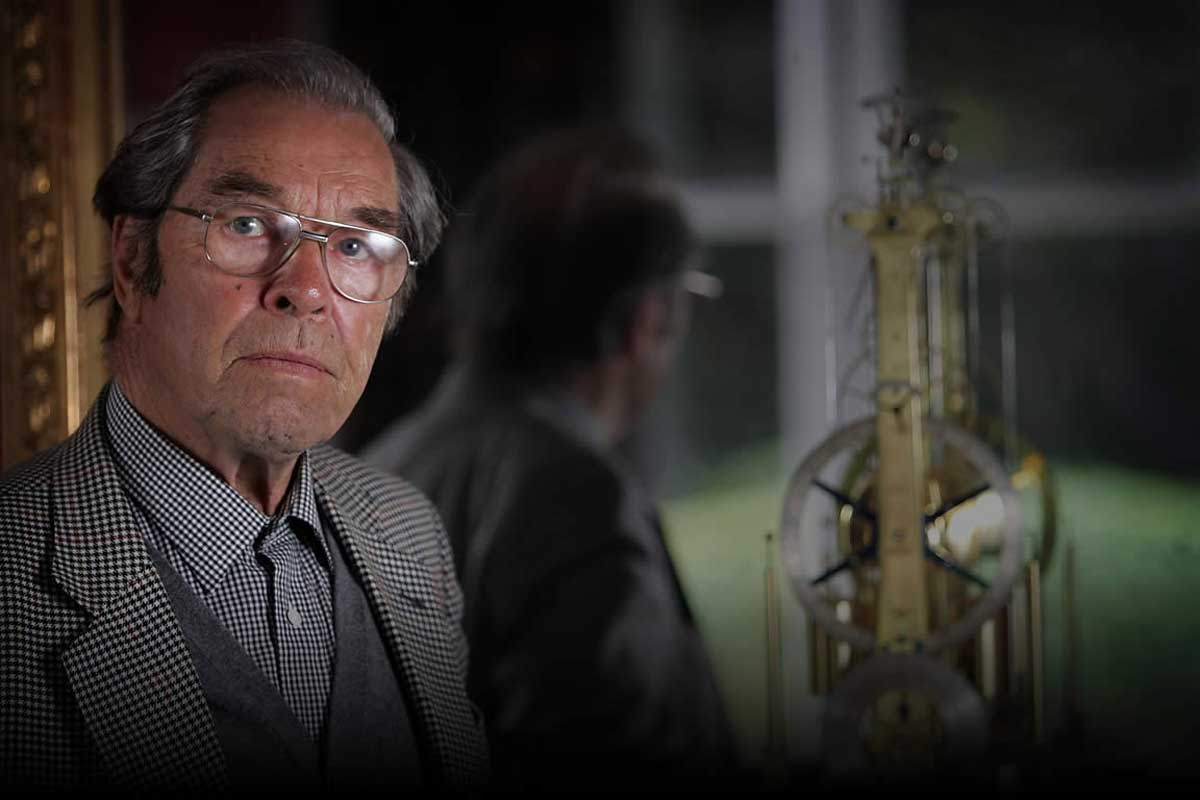
George Daniels was the first watchmaker to have mastered 32 of the 34 crafts considered necessary to build a watch
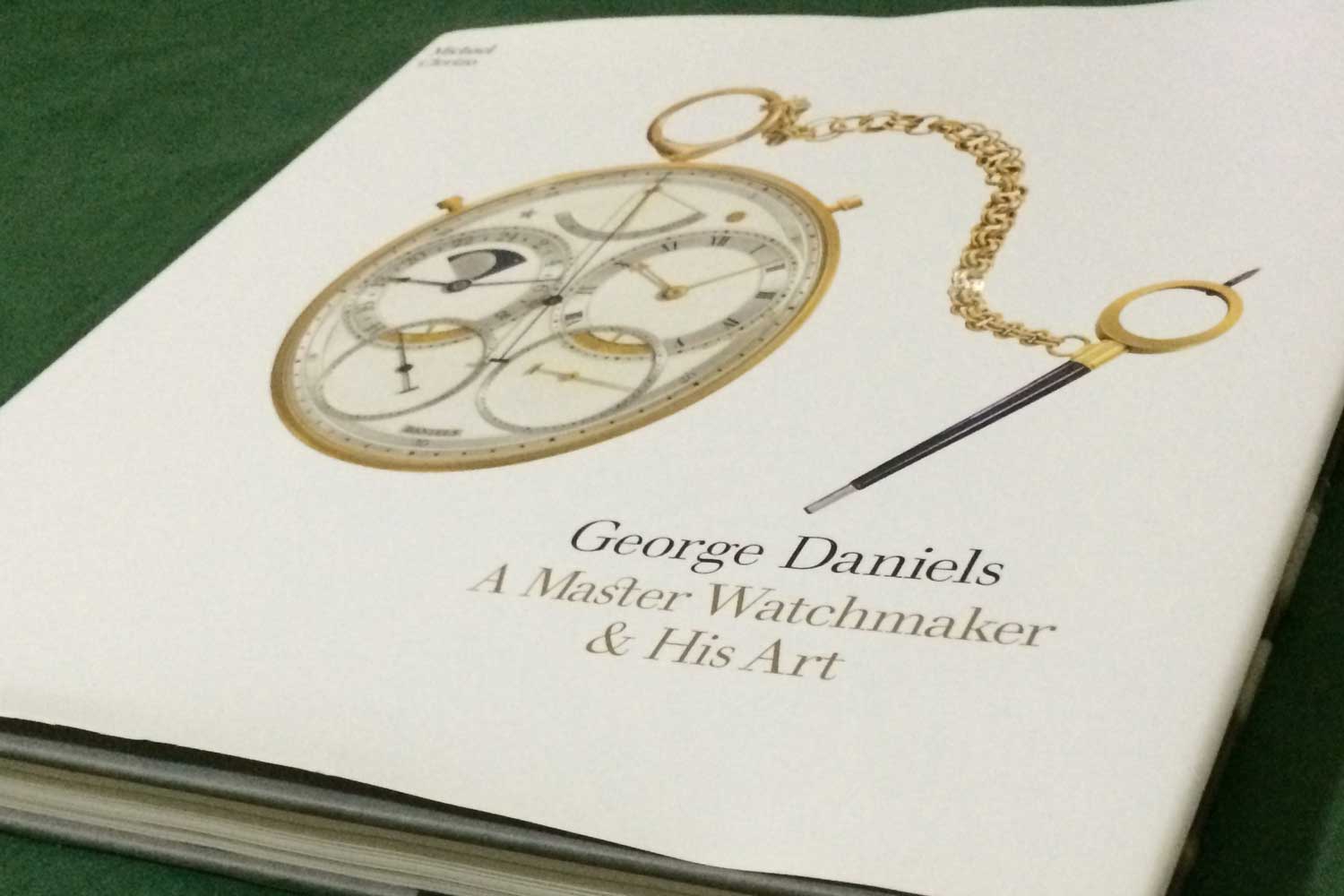
George Daniels – A Master Watchmaker & His Art (Thames & Hudson, London, 2013)
His inventions devoted to improving the most fundamental aspect of a mechanical watch — the escapement — remains a particularly fascinating study for those who would like a straight dive into the heart of watchmaking.
In fact, his journey as a watchmaker can be demarcated into three stages by escapements: from his early pocket watches equipped with a self-starting detent escapement, to the double-wheel chronometer escapement inspired by Breguet’s échappement naturel as found in his Space Traveller watches, to his most important invention, the co-axial escapement, which has become central to the mechanical identity of Omega today.
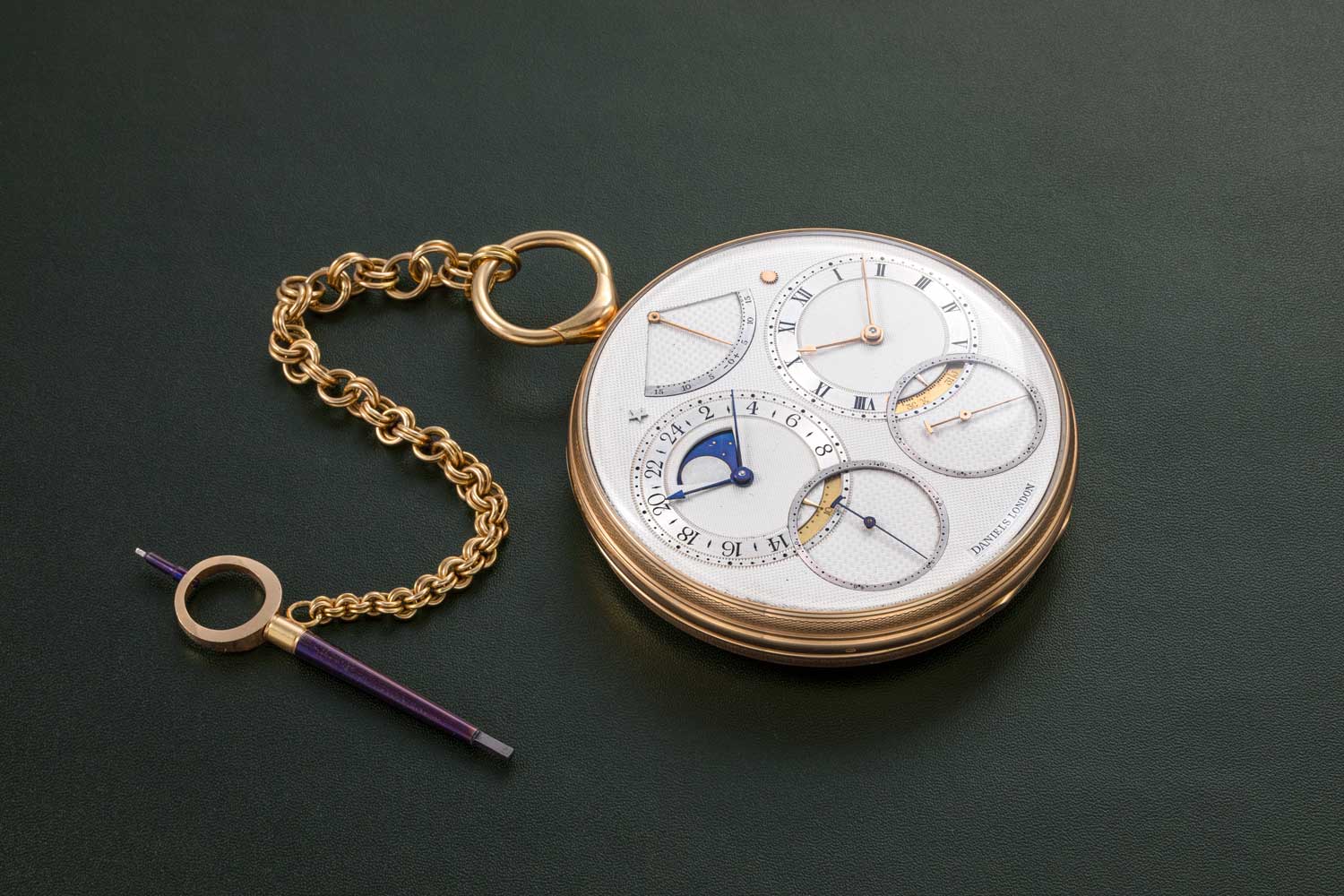
The Space Traveller by George Daniels (Images: The Hour Glass)
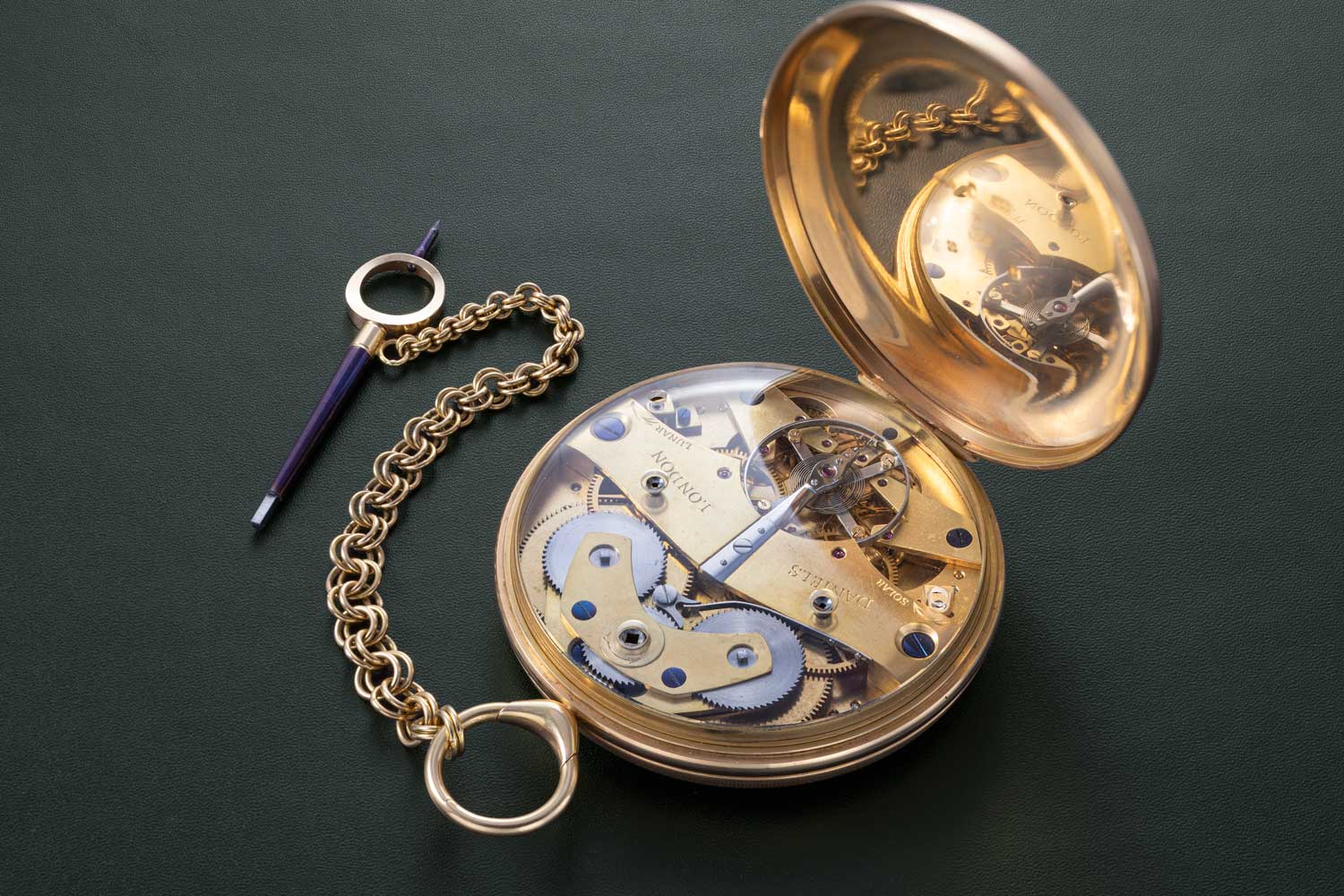
The Space Traveller by George Daniels (Images: The Hour Glass)
For these reasons, Daniels went in search of an oil-free escapement that could be used in a wristwatch. He embarked on what would become a 25-year journey, taking as his starting point the oil-free detent escapement, which was first invented by French clockmaker Pierre Le Roy in 1748, and simultaneously refined by English watchmakers John Arnold and Thomas Earnshaw in 1782.
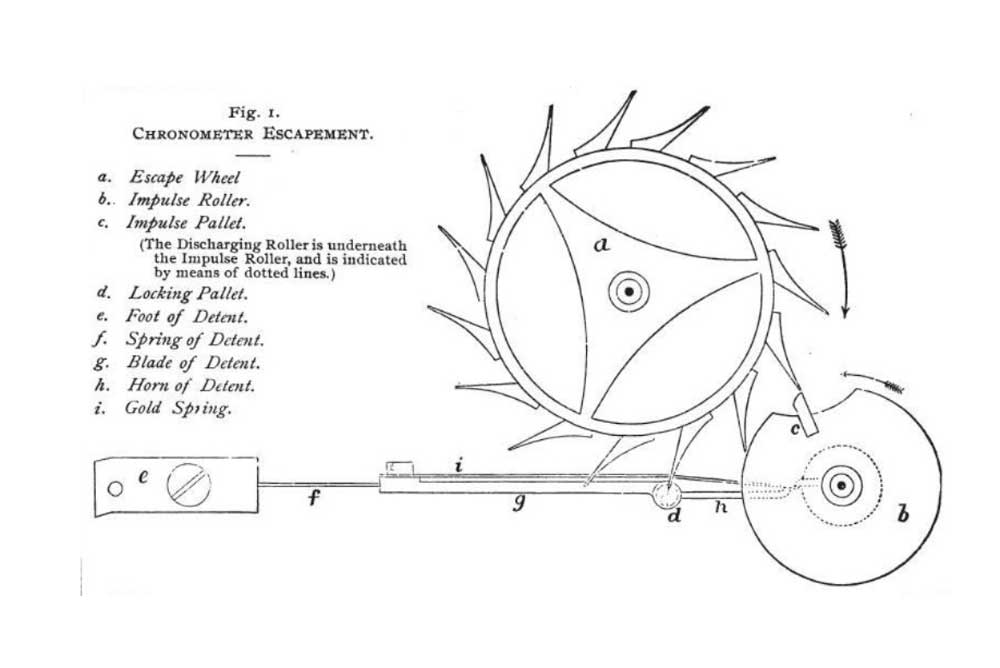
Thomas Earnshaw’s version of the detent escapement
However, the inherent shortcoming of the detent escapement is its inability to self-start. As the balance has to swing freely across a wide angle clockwise in order to unlock the detent in the counterclockwise direction, any shocks during this period might cause it to trip, thus stopping the watch. In the event that this occurs, it is unable to self-start as a large force is needed to restart the balance from an inert position.
In his early pocket watches, George Daniels altered the geometry of the detent escapement to ensure that the escape wheel is always unlocked when the balance wheel is stationary, enabling it to be self-starting.
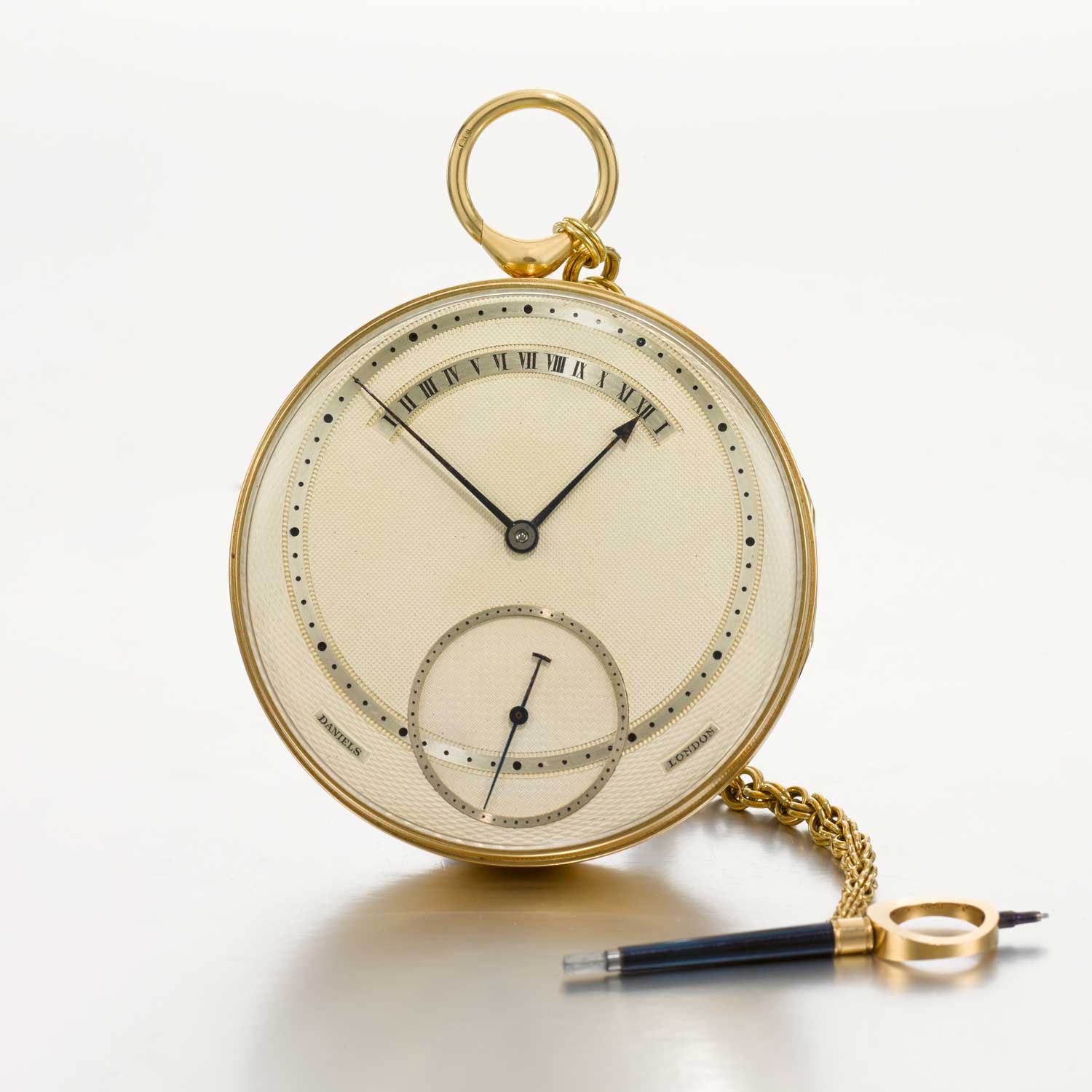
George Daniels' tourbillon pocket watch with a self-starting detent escapement (Image: Sotheby's)
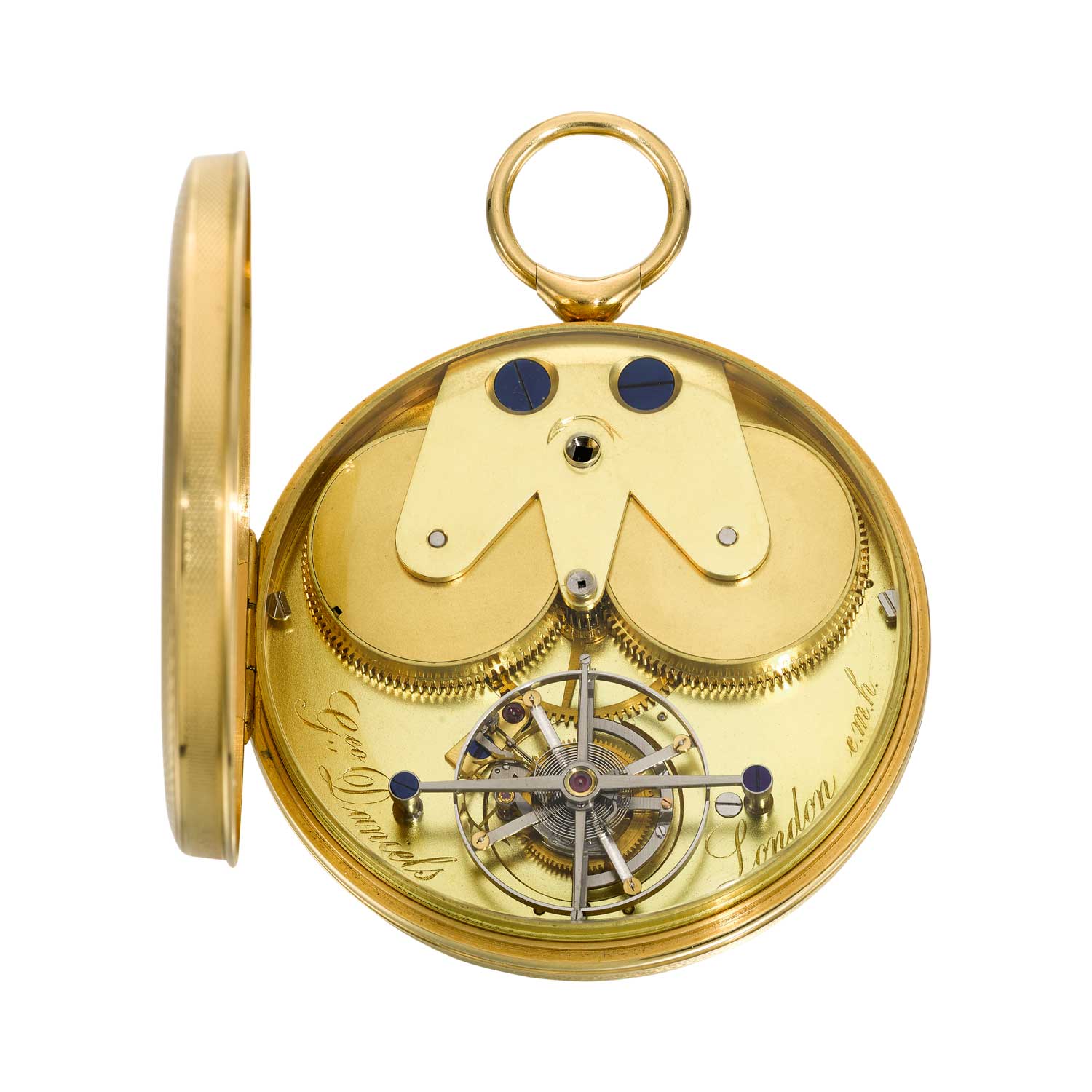
The first escape wheel is driven by the fourth wheel of the movement while the second escape wheel is directly driven by the first. However, due to the technological limitations of Breguet’s time, primarily manufacturing tolerances that would result in play between the escape wheels, he eventually gave up the idea and focused his efforts on improving the lever escapement.
To resolve the issue of play between the escape wheels, Daniels’ solution was to give each escape wheel its own gear train and power supply, enabling each of them to operate independently, without any direct connection. Oscillation of the balance is maintained by direct impulse in two directions, and the locking and unlocking of the escape wheels is facilitated by a secure detent system with a principle locking pallet and two secondary pallets.
However, Daniels’ double wheel escapement was a rather impractical and costly solution for a wristwatch as it essentially required combining two movements in one. He made the most out of this construction by having each gear train drive a different indication, as was the case with his famous Space Traveller watches.
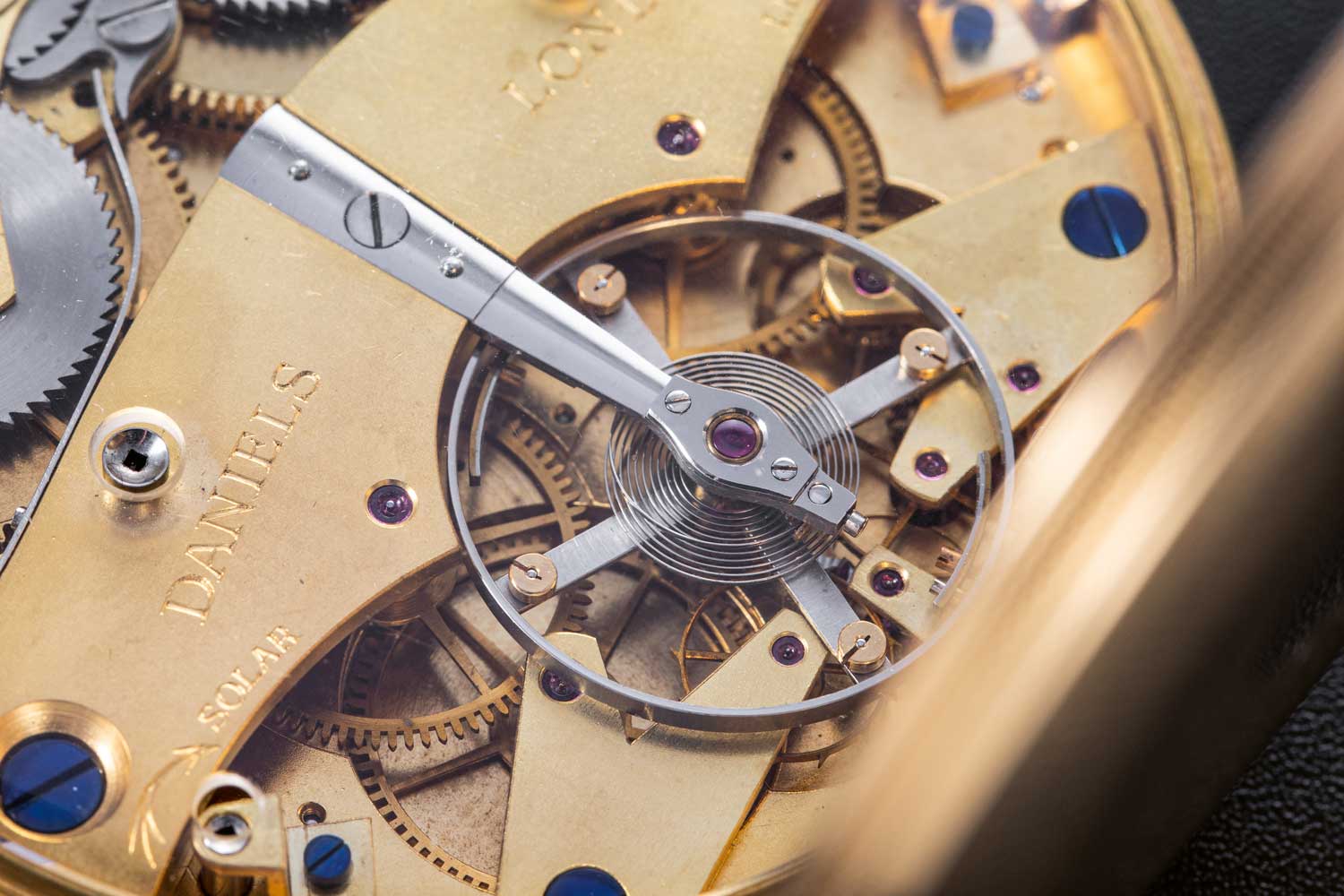
The double-wheel chronometer escapement in the Space Traveller (Image: The Hour Glass)
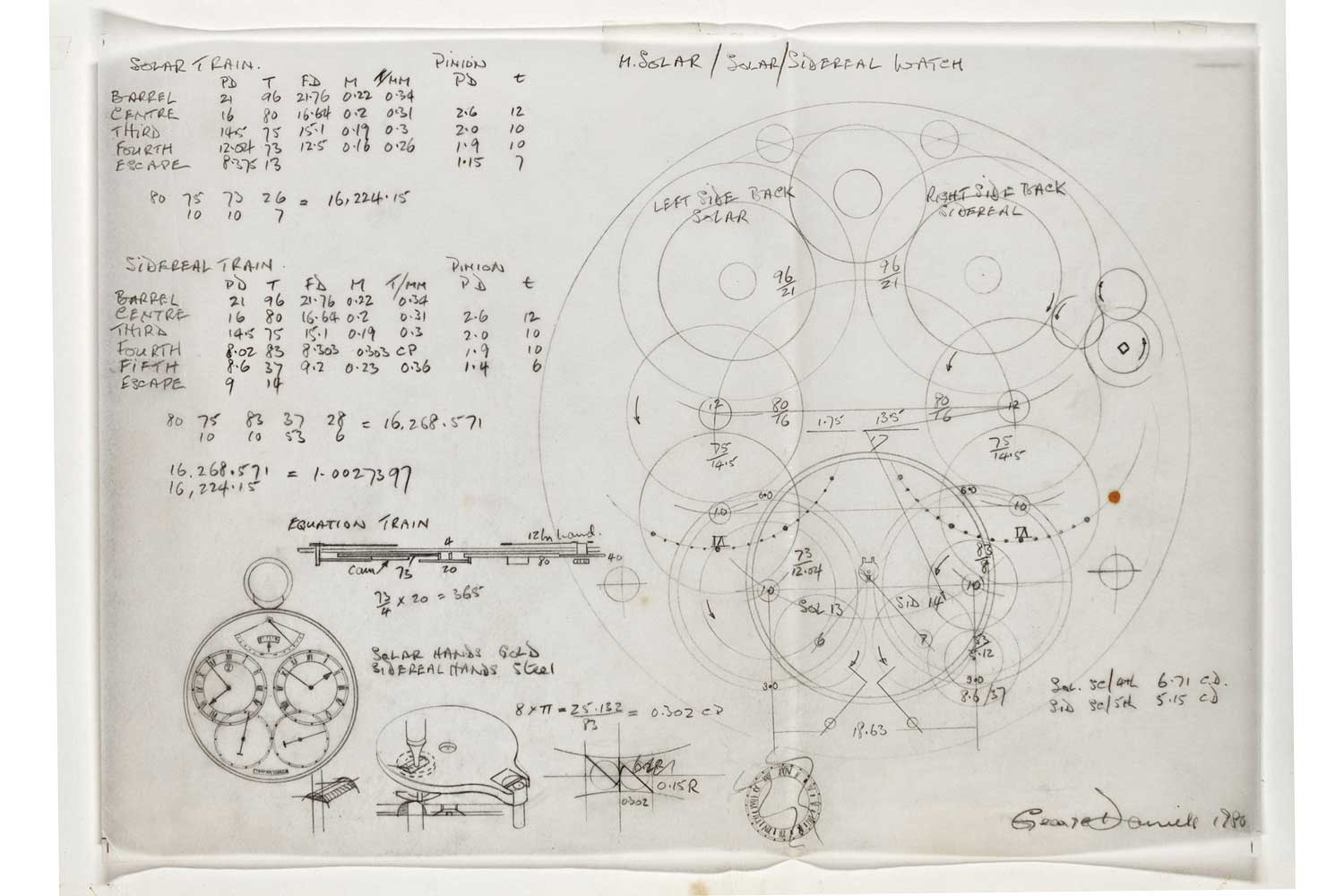
Space Traveller's design layout
Introduced in 1975, the co-axial escapement typically consists of four components: an intermediary wheel (because the co-axial escape wheel has less teeth and spins faster than a regular escape wheel), a double co-axial wheel consisting of an escape wheel and a pinion, a lever with three ruby pallet stones and a roller carrying a ruby impulse stone and a ruby impulse pin.
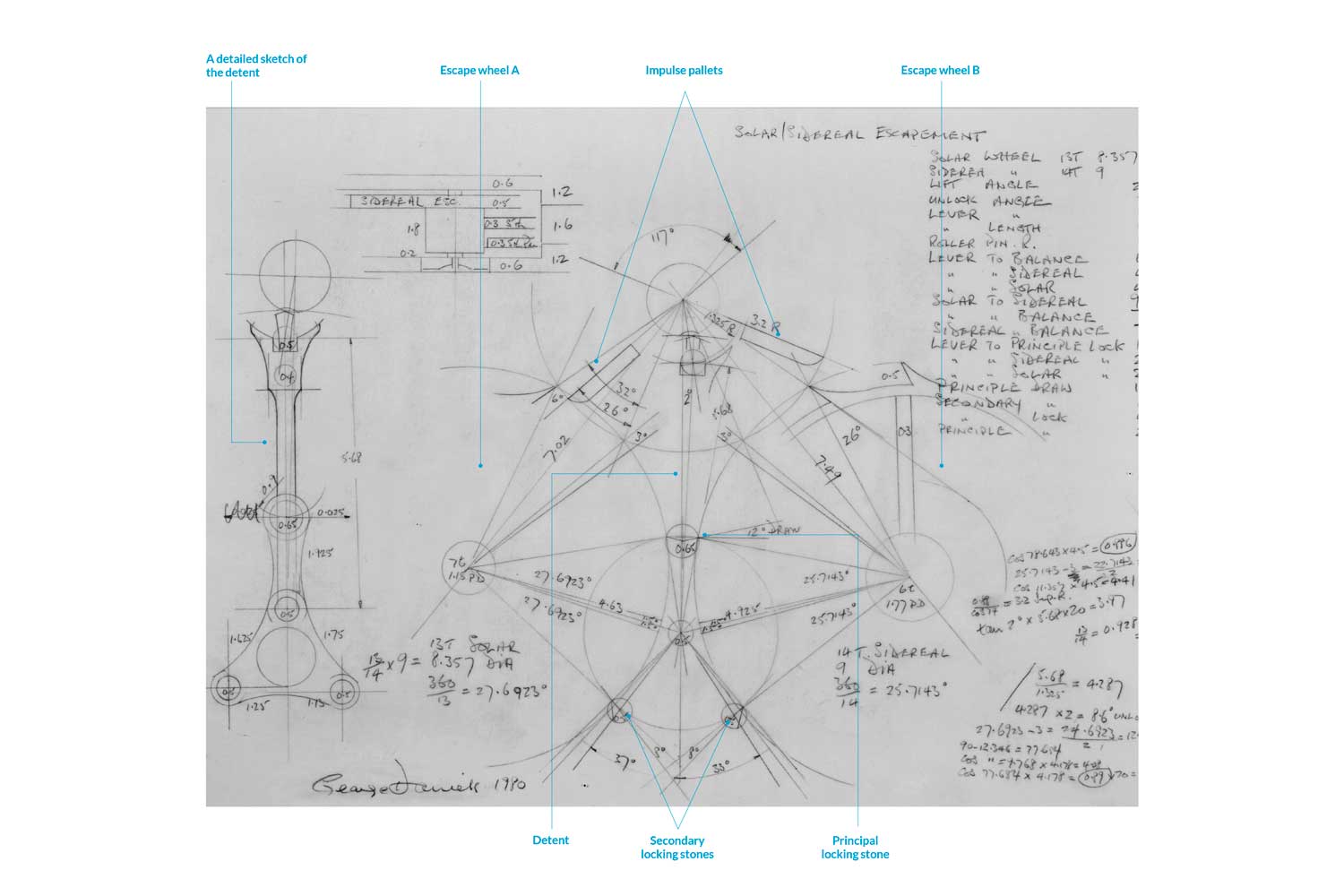
George Daniels' sketch of the double-wheel chronometer escapement
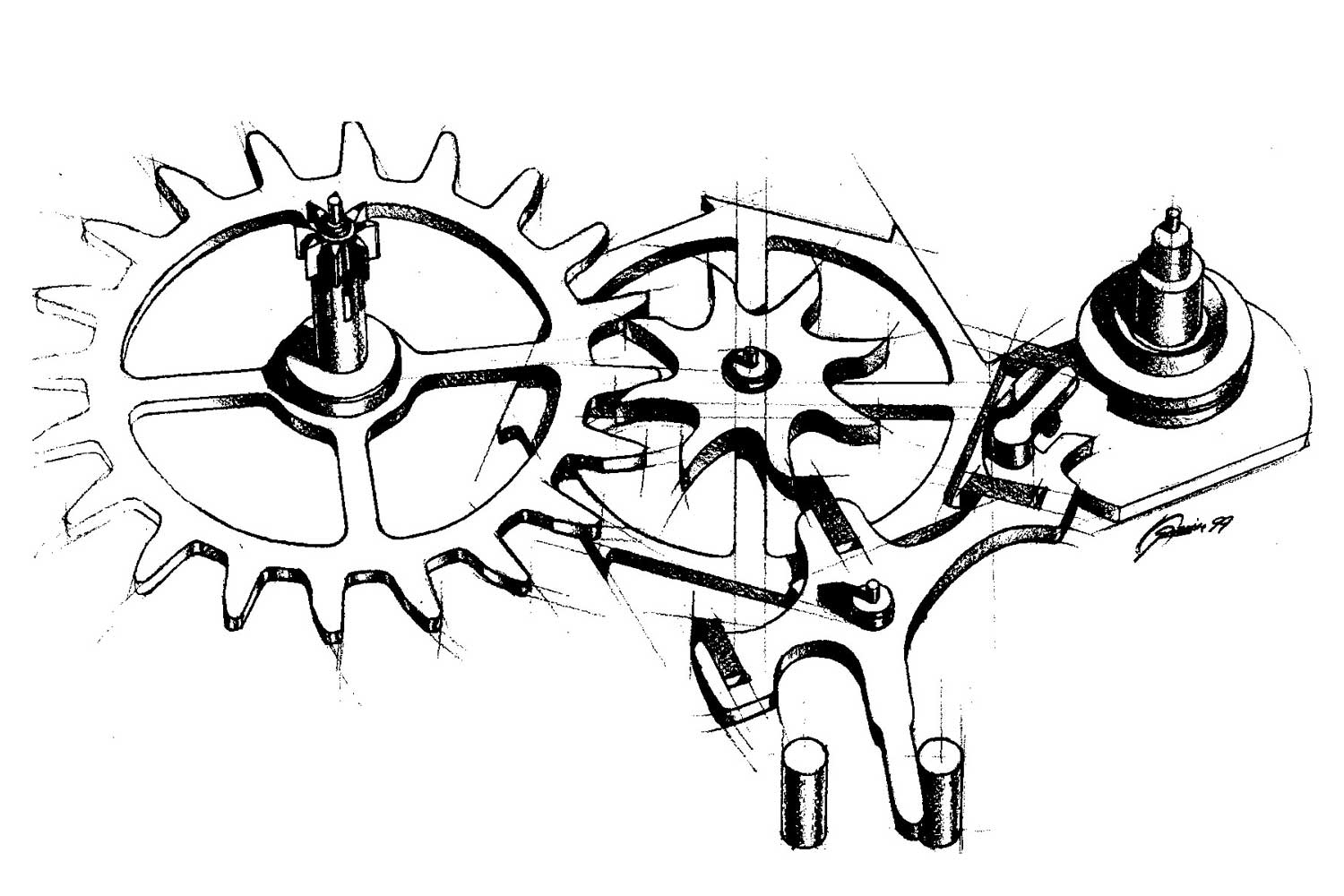
A drawing of the co-axial escapement
The road to bringing the escapement to commercial reality took almost two decades, with many setbacks in the making. Today, it remains the only alternative to the Swiss lever escapement that has been successfully realized on an industrial scale.
A Horological Friend and Equal
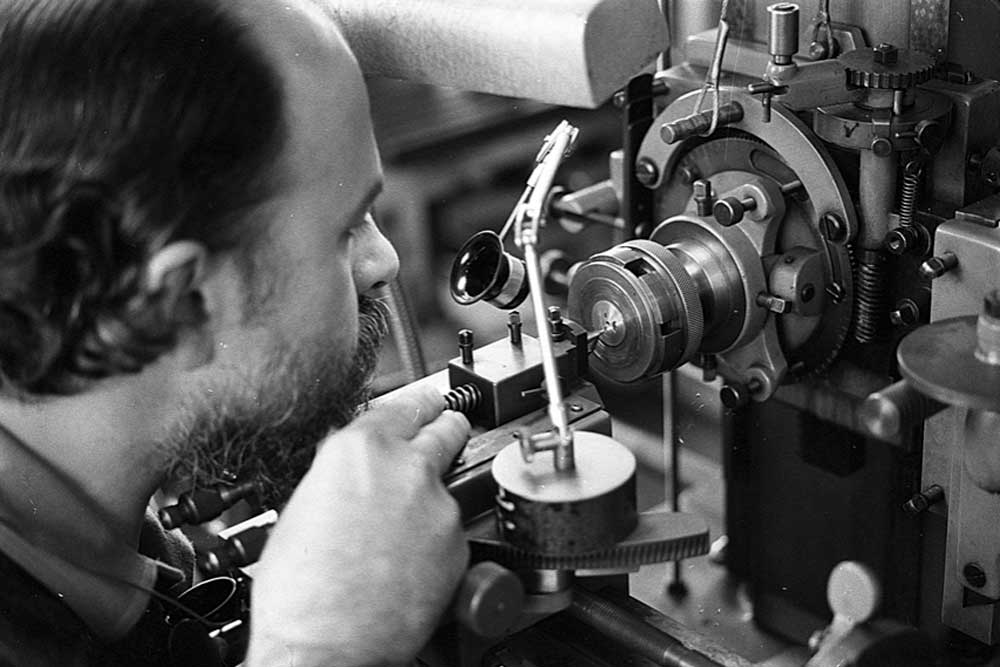
Derek Pratt
Upon Pratt’s death, Daniels noted that “we have all lost an important mechanical horologist of great experience and great knowledge, who was above all generous and congenial in his dealings with others. I have simply lost a brilliant horological friend and companion.”
While Daniels’ influence in watchmaking echoes far and wide, Pratt’s contributions are known primarily among collectors of the uppermost echelons as his work behind the scenes did little to trumpet his extensive resume. He spent most of his life creating watches in anonymity for others.

Derek Pratt was a scholar and workman who could conceive and craft every component of a watch from scratch.
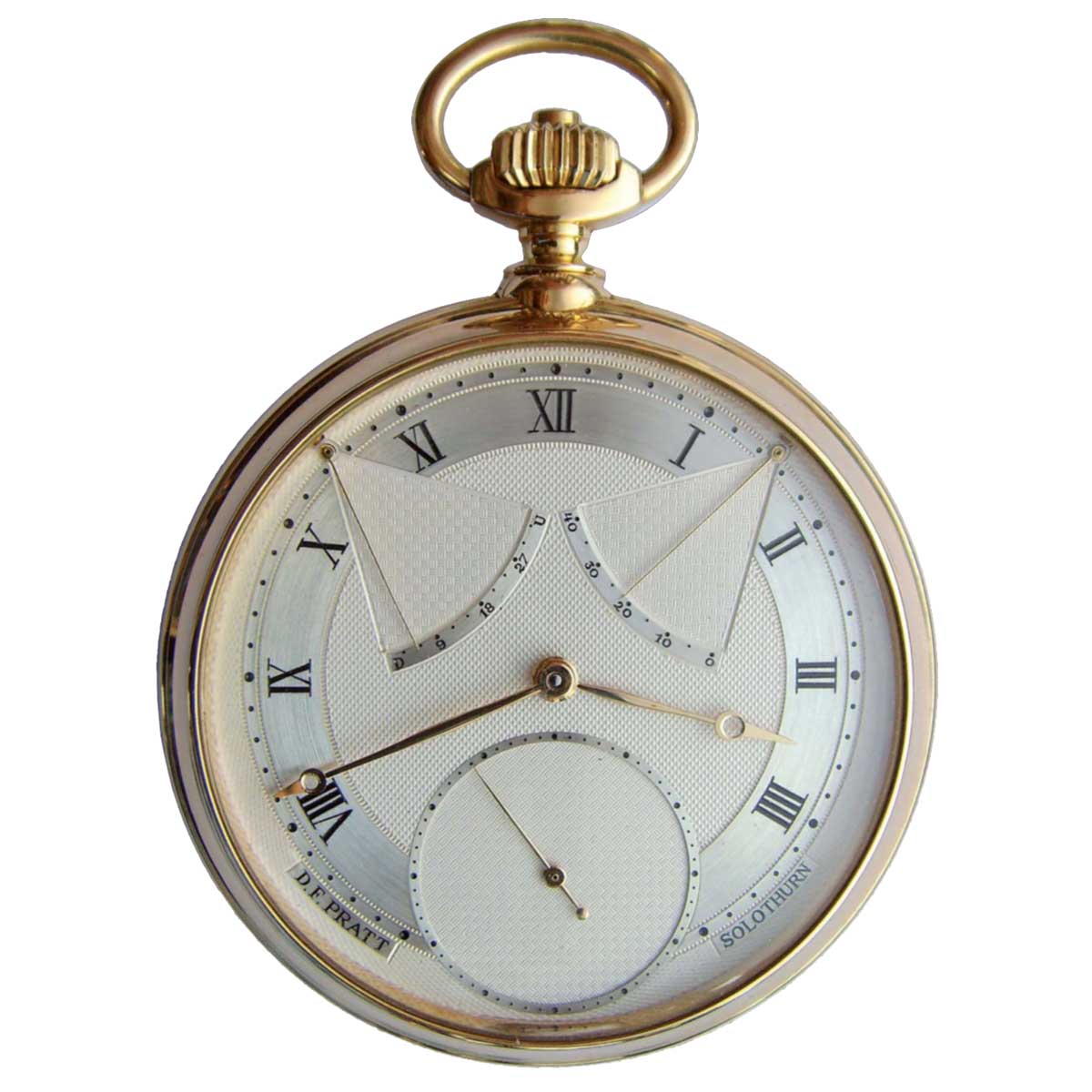
The Double-Wheel Remontoir Tourbillon
To solve this, he integrated an additional fixed internal gear ring in the fourth wheel, allowing the first escape wheel to be driven by the outward teeth of the fourth wheel in an anticlockwise direction while the second driven by the inward-facing teeth clockwise. This solution led to one of his most important timepieces, the Double Wheel Remontoir Tourbillon that was conceived to enter in the Prix Abraham-Louis Breguet, a tourbillon contest sponsored by the Breguet foundation to mark the 250th anniversary of A.-L. Breguet’s birth, in 1997.
It was a pocket watch meant to achieve perfect chronometry in its heavy-hitting combination of performance-led mechanisms — the remontoir (one for each escape wheel), the double wheel escapement and the tourbillon. Alas, it lost to Carole Forestier’s novel concept of the Ulysse Nardin Freak, which reinterpreted the idea of a tourbillon as a means to tell time. Pratt’s creation might not have received the recognition it deserved but its merit is indisputable. Till today, Pratt’s idea remains the only conceivable way to implement a natural escapement in a tourbillon watch.
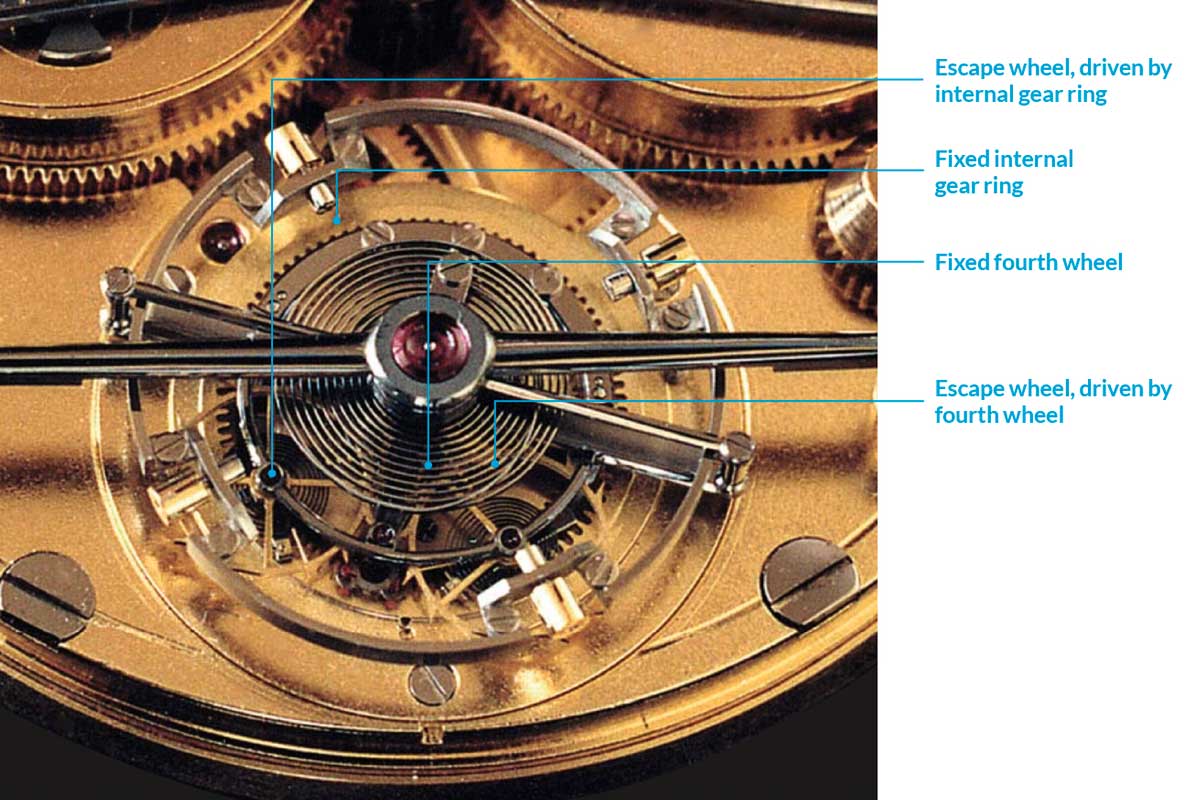
Pratt’s solution of a fixed internal gear ring remains the only conceivable way to implement a natural escapement in a tourbillon watch to date.
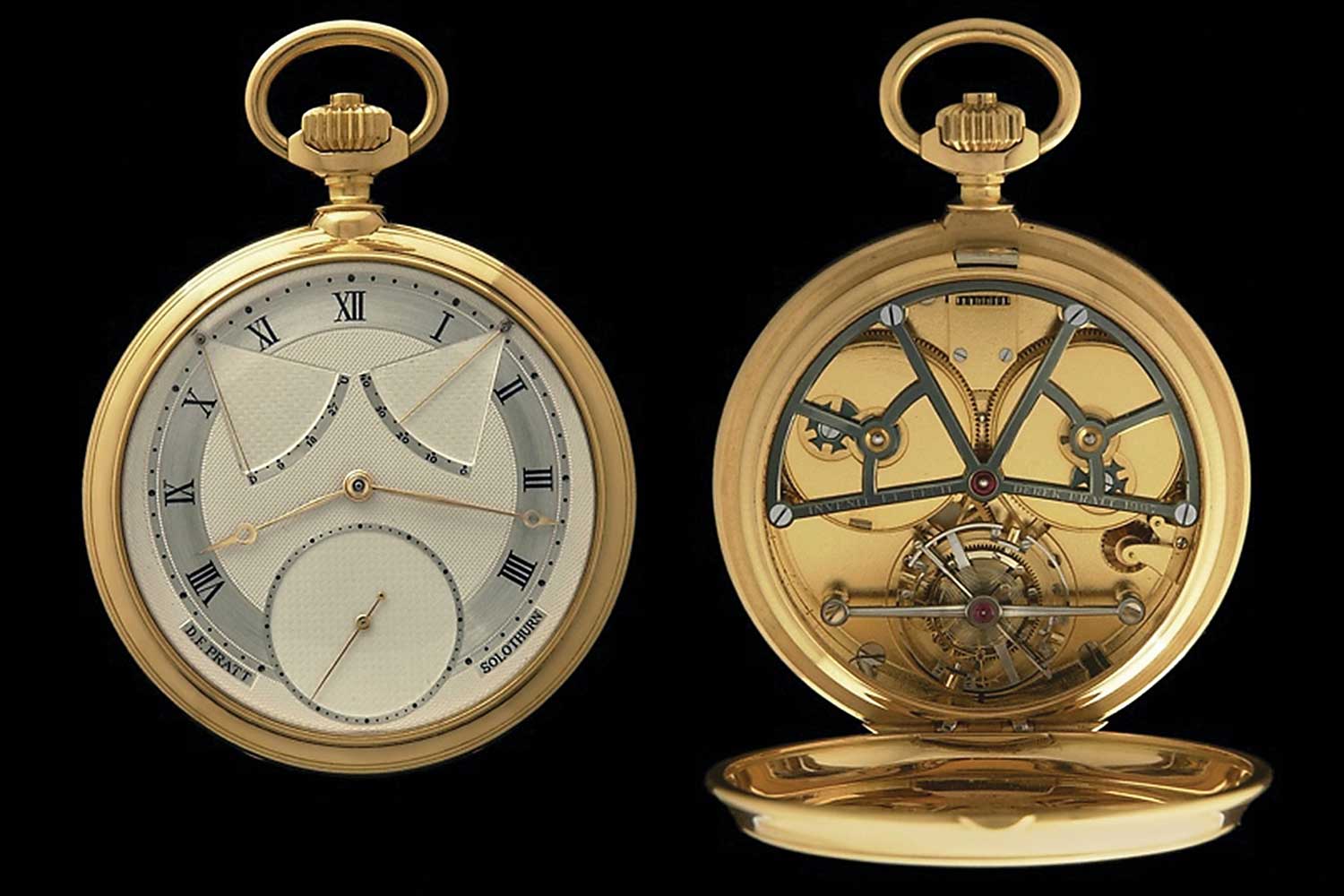
The Double-Wheel Remontoir Tourbillon
One of Pratt’s most important contributions to the brand was a tourbillon pocket watch, which sold at Christie’s for CHF 315,000 in 2008. It was the first timepiece in which a remontoir escapement was integrated into the tourbillon carriage. In a traditional tourbillon, the escape wheel has a tiny pinion that allows it to revolve around a fixed gear in the movement. In Pratt’s version, the escape wheel does not have a pinion or a shaft at all. Instead, the lever escapement is installed co-axial to the remontoir escapement, with both the escape and three-tooth remontoir wheels stacked and linked by a spring that is charged and released every second.
The action of the remontoir is controlled by a cam in the shape of a Reuleaux triangle, which was a subject of great fascination for Pratt. Characterized by three circular arcs, each one-sixth of a circle, the Reuleaux triangle is unique in its ability to offer constant width regardless of its orientation when it is rotated. This enables a constant flow of power from the mainspring to the balance from start to finish. While the Reuleaux remontoir is not a new concept, it was Pratt who brought it to the forefront of modern watchmaking. Towards the end of his life, Pratt had expressed a desire to implement the mechanism in a wristwatch. Today, it can be found in a wristwatch of Pratt’s own design, developed by a pair of American watchmakers, Stewart Lesemann and Ron DeCorte, under the Derek Pratt trademark.
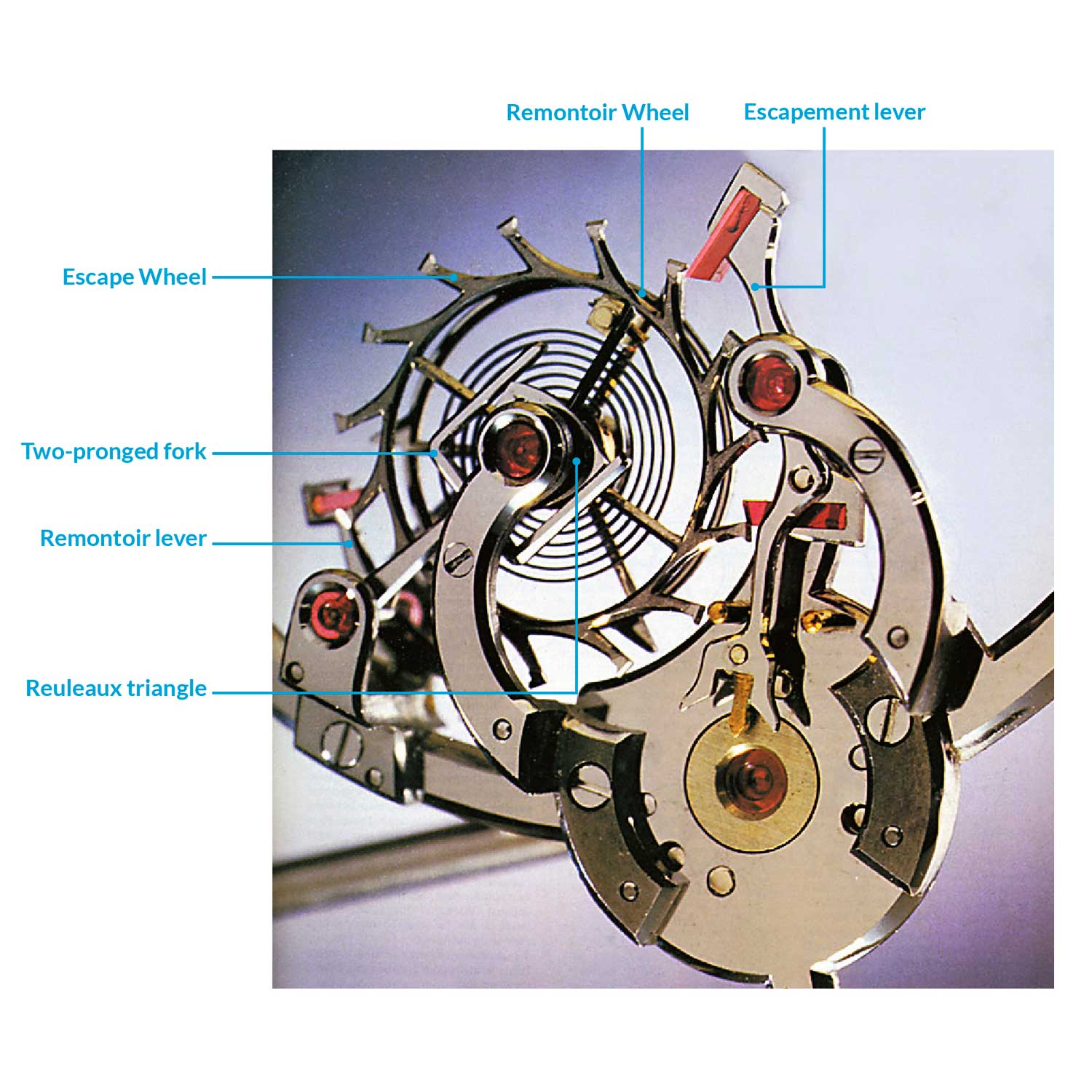
A close-up of the remontoir escapement controlled by a cam in the shape of a Reuleaux triangle
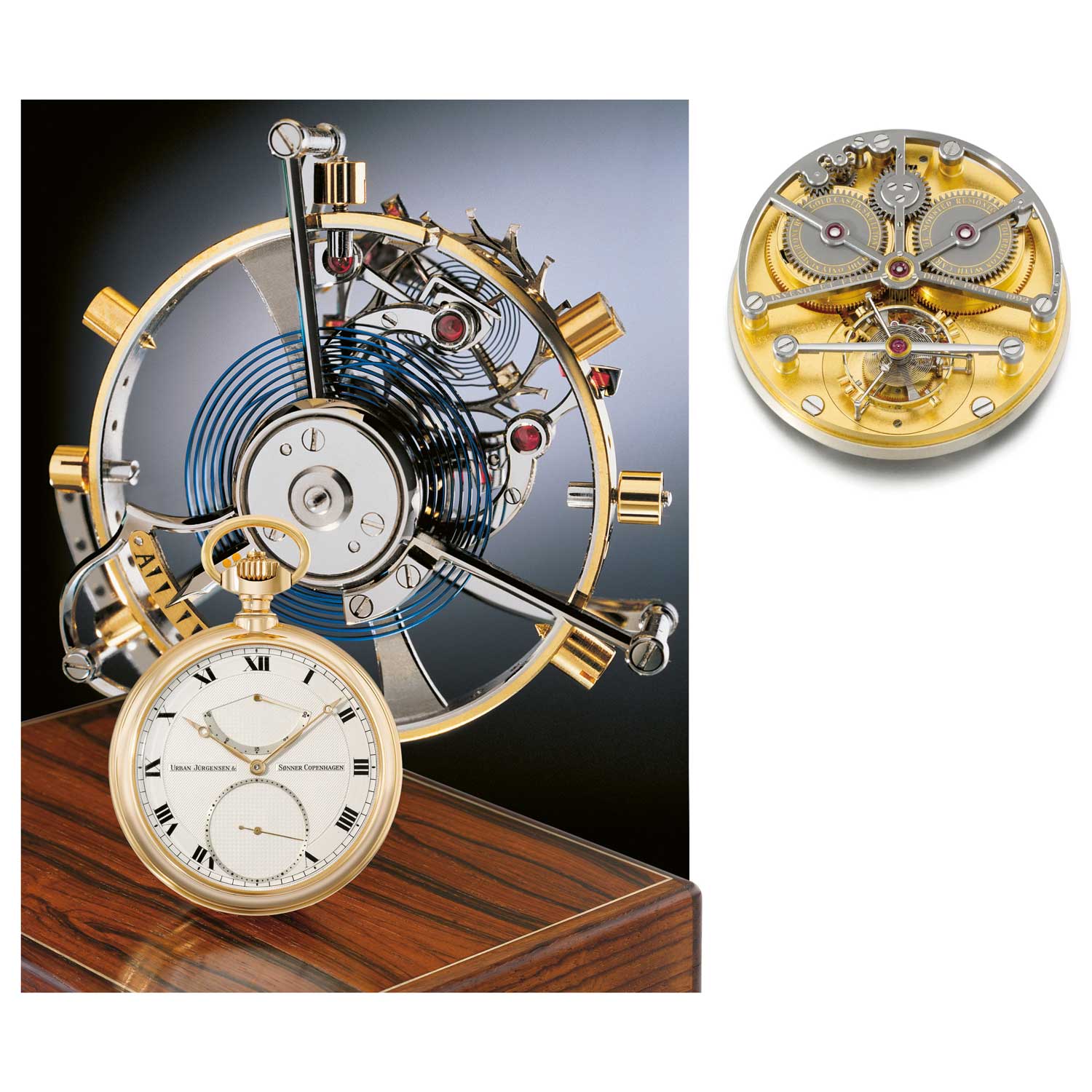
An Urban Jürgensen & Sønner tourbillon pocket watch with Pratt’s signature carriage-mounted remontoir (Image: Christie's)
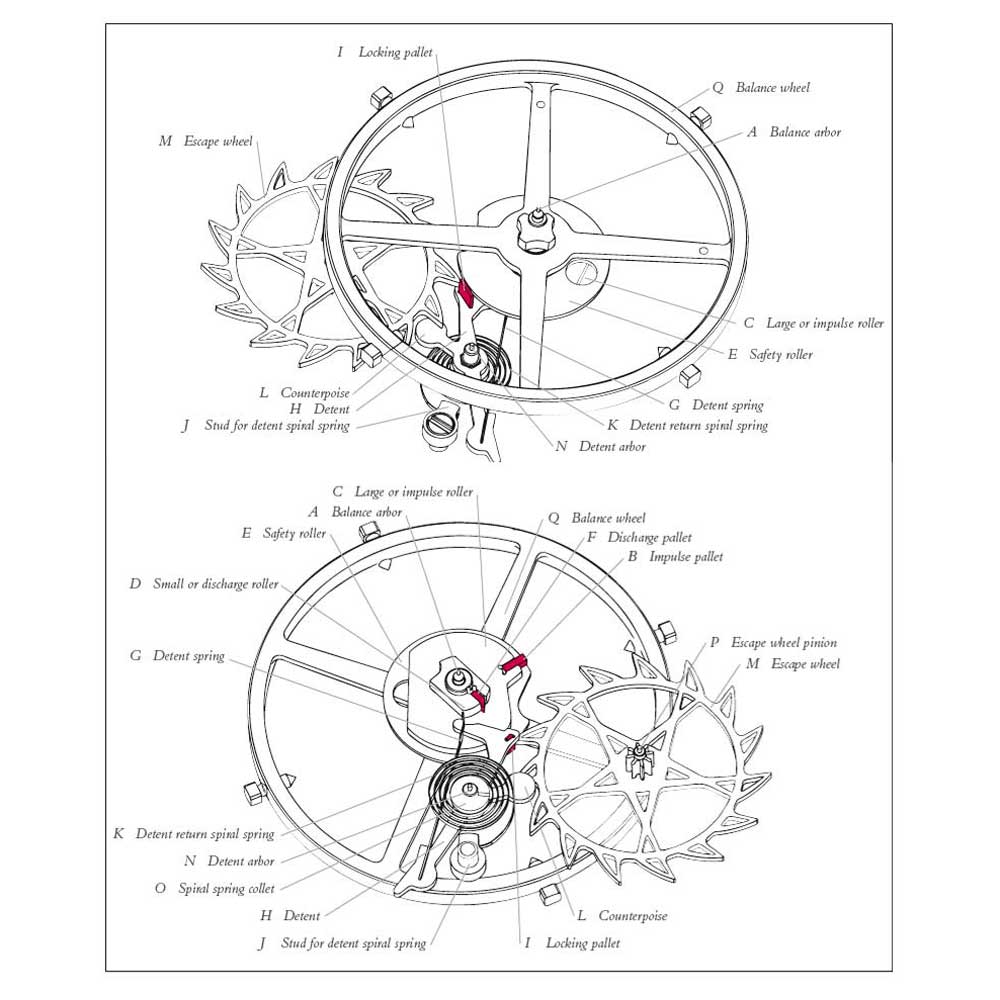
Drawings of the detent escapement in the UJS-P8 movement. The upper sketch is the top view and the lower one captures the escapement’s view from the bottom. (Image: “The Jurgensen Dynasty, four centuries of watchmaking in two countries” by John M. R. Knudsen)
Pratt’s most monumental work, however, was probably the re-creation of John Harrison’s H4 Marine Chronometer. In contrast to the H1, H2 and H3 chronometers, which were massive clocks with grasshopper escapements, the H4 was a large pocket watch with a specially designed verge escapement equipped with diamond pallets. Pratt began working on it in 2004 but passed away in 2009, and it was subsequently completed by Charles Frodsham in 2014.
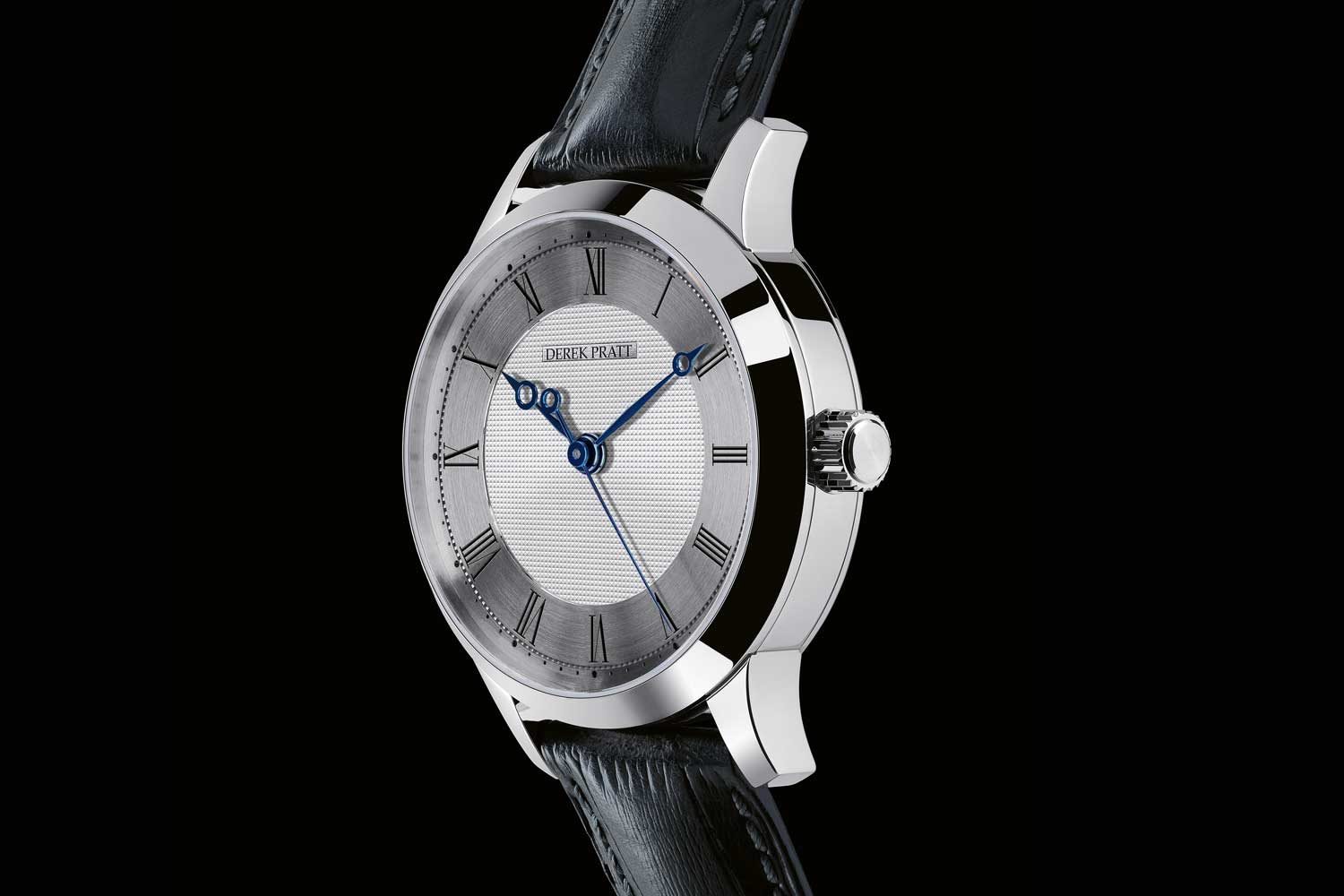
The DPW 01 by Derek Pratt Watches (Image: Atelier 7h38)
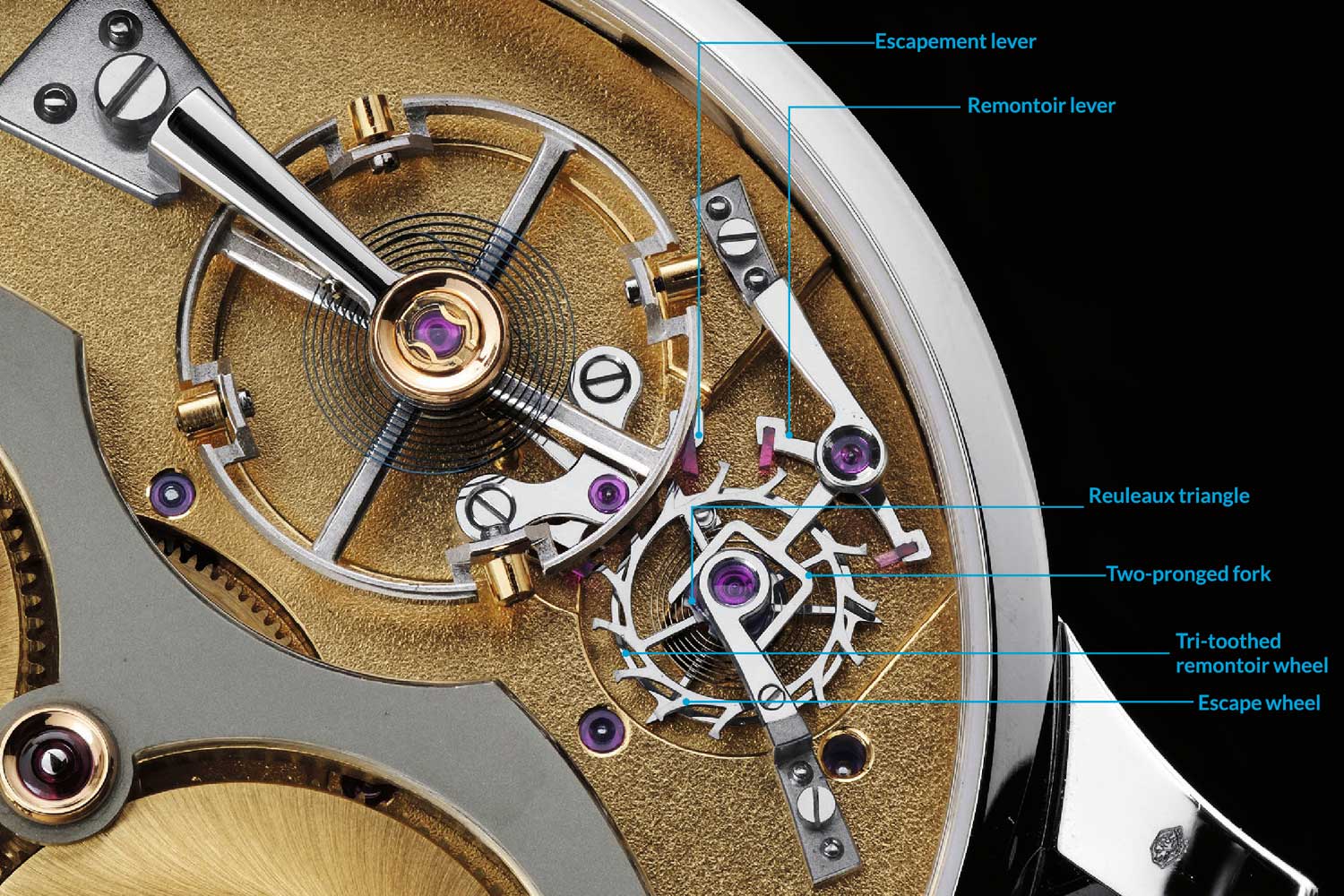
The watch incorporates Pratt's signature Reuleaux remontoir (Image: Guy de Peslouan)
More broadly, Daniels’ accomplishments demonstrated that the path of independence was far more rewarding than laboring at a single division down an assembly line or building complications in contractual silence for the top watch companies. Their practical talent, independence of thought and the immensity of their impact continue to embolden generations of others to follow in their footsteps.
Upon Daniels’ death in 2011, François-Paul Journe poignantly wrote in a letter to his mentor, “You have opened the main door of contemporary horology and showed us the path back to authentic watchmaking and innovative sense, in the respect of the grand horological tradition of our grand watch master [Abraham-Louis Breguet]. You opened the main door; I could only follow in opening others. But the most difficult to open was definitely the first.”
Editor’s Note: A great way to learn more about these pioneering watchmakers in the field of independent watchmaking is through The Hour Glass’ The Persistence of Memory online exhibition.
The Hour Glass’ goal with The Persistence of Memory is to create a living online repository of the key members of this contemporary independent watchmaking movement, documenting its developmental timeline and photographing and archiving its most important watches.
Experience The Persistence of Memory here: https://ovr.thehourglass.com










